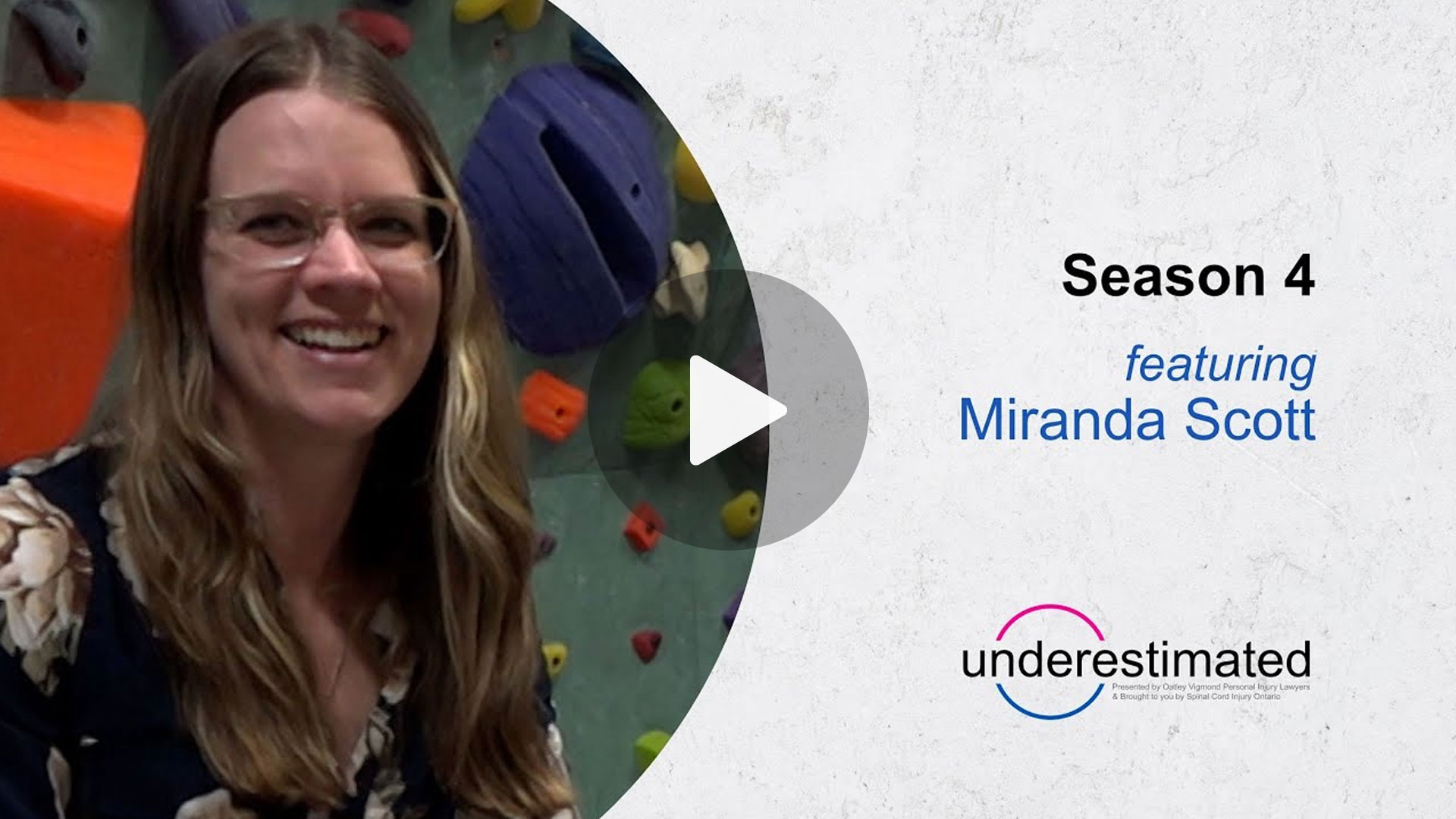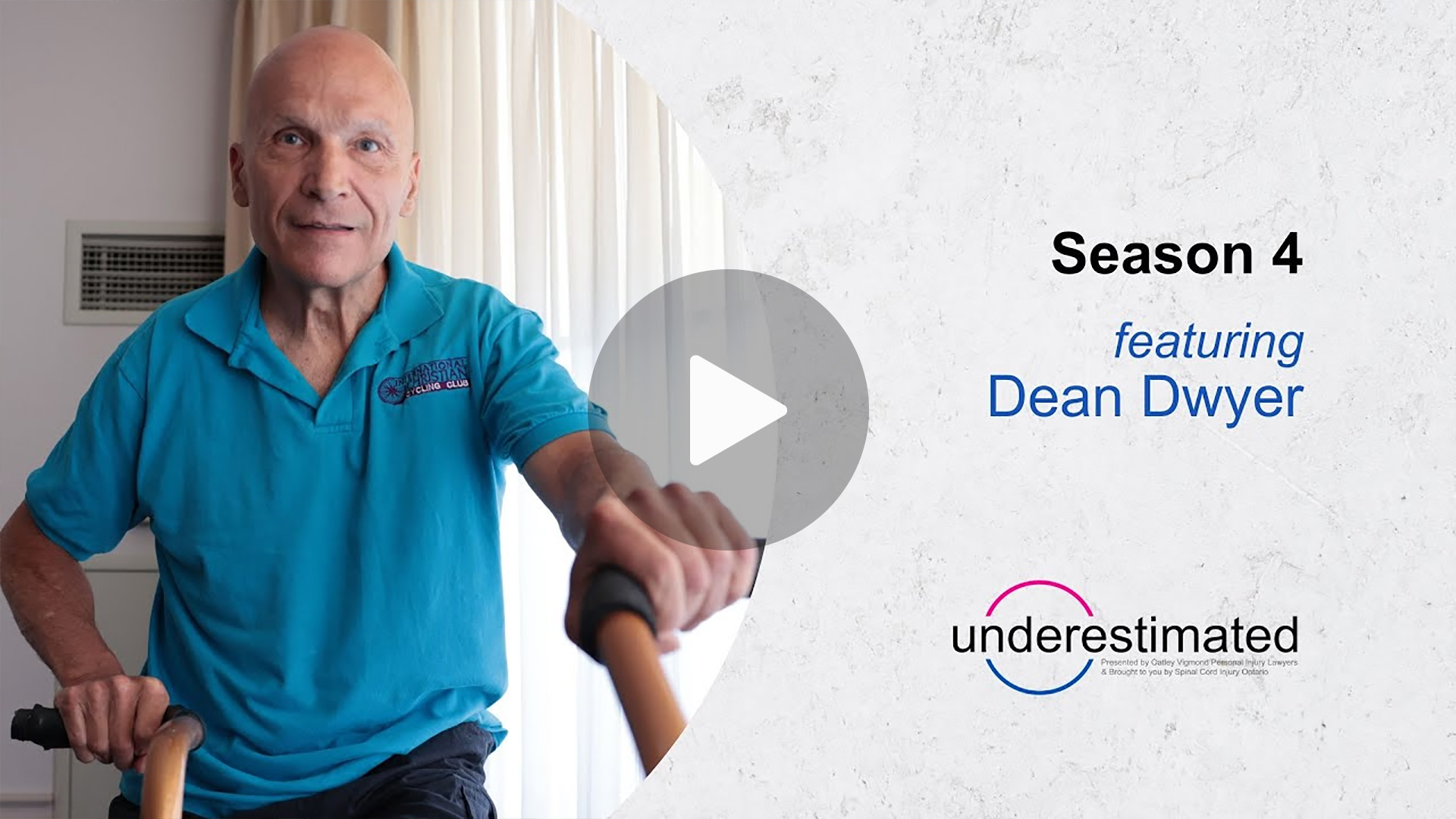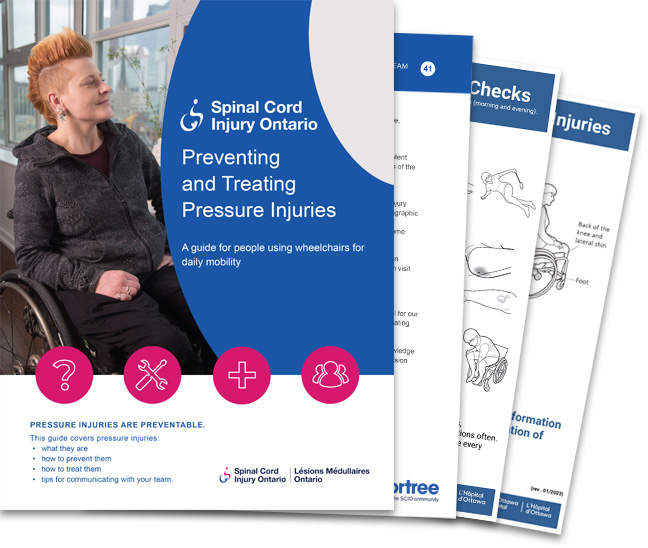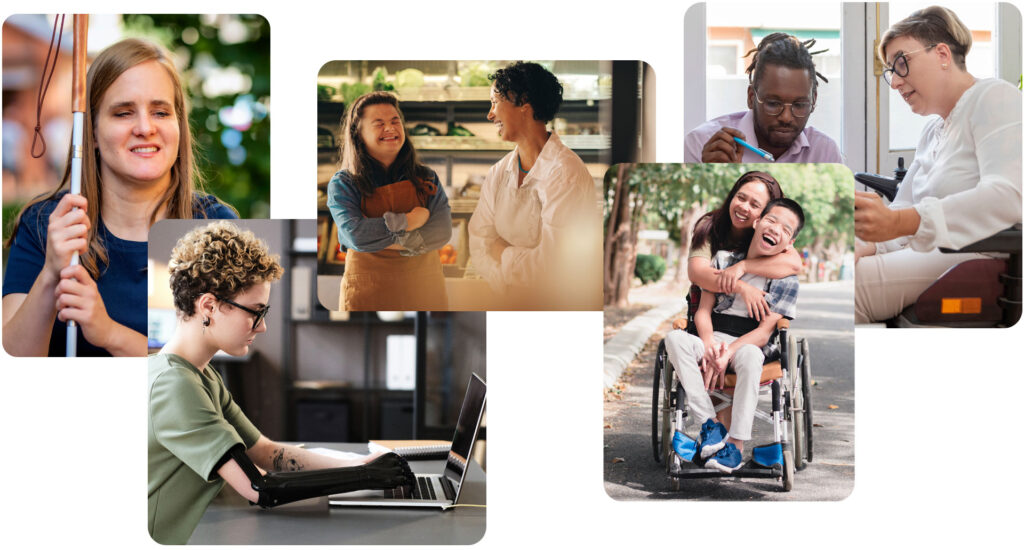In this episode of Understimated, Tory visits with Gary and Kristy Luker at home in Stoney Creek, Ontario, to learn about their journey with fertility and parenting after Gary’s spinal cord injury.
Gary and Kristy met in high school and have been together for almost 30 years. They were married in the hospital six days after Gary broke his neck in a diving accident, the first people as far as they know to ever have been married in acute care at Hamilton Health Sciences. They live in Stoney Creek where Kristy is an elementary school Vice Principal. Gary played wheelchair tennis at the national level for over 10 years, representing Canada 12 times at the World Team Cup. They are the parents of teenaged boys and are Peer Support volunteers with Spinal Cord Injury Ontario, meeting with newly injured people and sharing their fertility journey.
The journey of starting a family began in the rehab centre a year after Gary’s accident. The first step was to collect a sperm sample using a vibrator and test the sample for viable sperm. A doctor, a nurse and Kristy were in the room. From there, Gary had to find a vibrator that was powerful enough for him to produce a sample at home. Gary was advised that the more times he ejaculated, the better the sperm count would be, so he had to try to “do it” somewhat often. Gary estimates this “practice at home” occurred roughly once a week.
Then Gary and Kristy did five Intrauterine insemination (IUI) treatments at a fertility clinic at a cost of $350 each time. Gary would produce a sample at home and Kristy would bring it into the clinic, where they would do a sperm wash and use a catheter to insert it into Kristy. The clinic’s analogy was to picture a football field — they were putting the sperm in the end zone which is closer to the eggs.
When the IUI treatments were unsuccessful they realized Kristy was experiencing something called a Luteal phase defect, which changed the frequency of her period. This meant the lining of Kristy’s uterus wall wasn’t thick enough to hold the egg. Once Kristy took the medication, her periods became regular and that’s when everything started to work.
Gary and Kristy had heard of people getting pregnant using a turkey baster. Since Gary is not able to ejaculate inside Kristy, he had to put the sperm into something and insert it into her. They ended up using a syringe from the fertility clinic. Kristy still had to get blood work done at the fertility clinic in order to find out when she was ovulating. The syringe procedure was done at home. With each kid it worked on the second try.
The whole process took about five years. Gary and Kristy had their first child in 2008 and second three years later. Gary’s perspective is he wouldn’t change anything. “It was our journey that we went through. I mean, we have a group of friends that have a lot of kids around the same age. So it kind of worked out that way.”
To learn more about sexual health, fertility and pregnancy after spinal cord injury, check out these additional resources we recommend:
- Pregnancy after spinal cord injury https://community.scireproject.com/topic/pregnancy
- Breastfeeding following spinal cord injury https://community.scireproject.com/topic/breastfeeding
- Sexual health after spinal cord injury https://community.scireproject.com/topic/sexual-health
- Spinal Cord Injury BC’s SCI Sexual Health website https://scisexualhealth.ca/
- Spinal Cord Essentials introduction to sexual health https://www.uhn.ca/TorontoRehab/Documents/Sexual-Health.pdf
- Spinal Cord Essentials introduction to sexual self discovery and body mapping https://www.uhn.ca/TorontoRehab/Documents/Sexual-Self-Discovery-And-Body-Mapping.pdf






